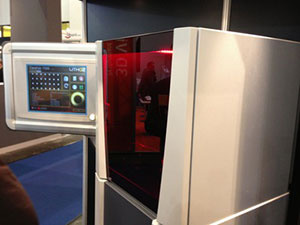In a power move to become an “absolute” leader in ceramic 3D printing a new project has been formed under the name ADMATEC. ADMATEC combines the Lithoz’s Lithography-based Ceramic Manufacturing (LCM) system Cerafab 7500 with ADMAFLEX to capitalize on their respective capabilities. Ceramics have a myriad of functions that take advantage of its unique composition and characteristics. Having taught a ceramics course for a few months last winter, I have a little hands-on experience with the old-fashioned production, and I am sure I speak for all three periods of that high school course when saying that a 3D printer might have been a welcome addition to the classroom.

For the ceramics course at the high school, we formed cups and coasters from ceramic clay and placed them overnight in an oven with temperatures reaching 3,000 degrees. It was an arduous and heartbreaking process as projects fell apart due to tiny cracks or other microscopic imperfections. With the 3D printer, you can create similar material with greater creative freedom. While Formatec’s ADMATEC’s project is a business decision, there remains the opportunity for high quality production on a large scale. And the process of either system is easily perferable to a sauna studio producing ceramics.
Source: Formatec


